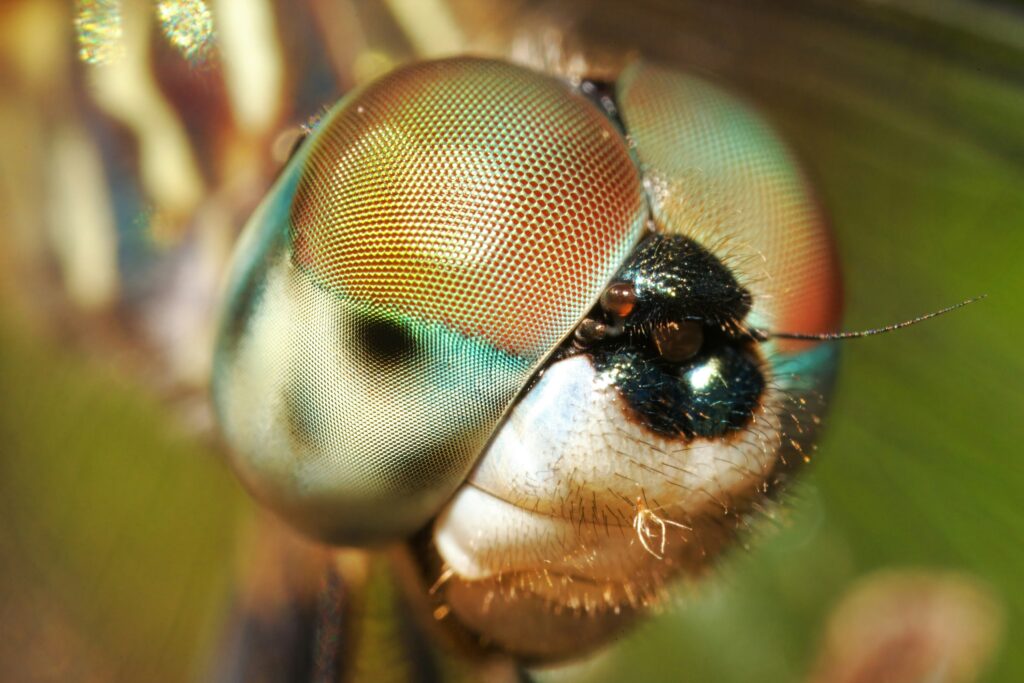The world of insect vision is a fascinating realm that operates on principles quite different from our own human experience. While we navigate a colorful world filled with reds, oranges, greens, and blues, insects perceive reality through a completely different visual spectrum. Many insects cannot detect the color red at all, while others possess the remarkable ability to see ultraviolet light—a spectrum completely invisible to the human eye. This divergence in visual capabilities isn’t a deficiency but rather a specialized adaptation that has evolved to serve insects in their unique ecological niches. From bees that use ultraviolet patterns to find nectar-rich flowers to mosquitoes that hunt by detecting the heat signatures of their prey, insect vision represents one of nature’s most fascinating evolutionary divergences from our own sensory experience.
The Fundamentals of Insect Vision

Insect vision operates through compound eyes, which consist of numerous tiny lens-capped units called ommatidia that work together to form a mosaic-like image. Unlike human eyes with their single lens, these compound eyes can contain anywhere from a few dozen to tens of thousands of individual ommatidia, each capturing a small portion of the visual field. Within these structures are photoreceptors containing light-sensitive pigments called opsins, which react to specific wavelengths of light and trigger neural signals. The types and combinations of these opsins determine which colors an insect can perceive, creating significant variation across different insect species. This fundamental difference in eye structure and function forms the basis for the unique visual capabilities and limitations found throughout the insect world.
The Visible Light Spectrum: Human vs. Insect Perception
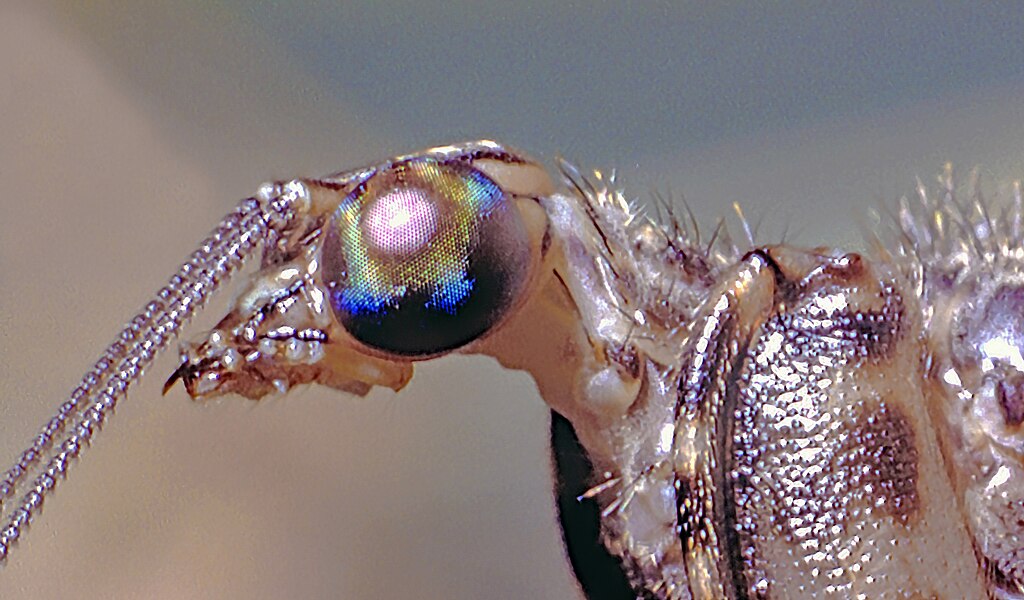
Humans perceive light within a spectrum ranging approximately from 400 to 700 nanometers, spanning violet through red wavelengths. Our trichromatic vision stems from three types of cone cells sensitive to blue, green, and red light, allowing us to experience a rich palette of colors. Insects, however, typically possess a different range of photoreceptors that respond to shorter wavelengths, often including ultraviolet light (below 400 nanometers) but frequently lacking sensitivity to red light (above 600 nanometers). This fundamental difference means that many insects perceive the world in a palette shifted toward the shorter end of the spectrum, rendering reds essentially invisible while revealing ultraviolet patterns completely imperceptible to humans. What appears as a vibrant red poppy to human eyes might register as a dull, unremarkable gray to many insect species—a profound difference in how we and insects experience the same visual world.
Why Red Often Disappears from Insect Vision
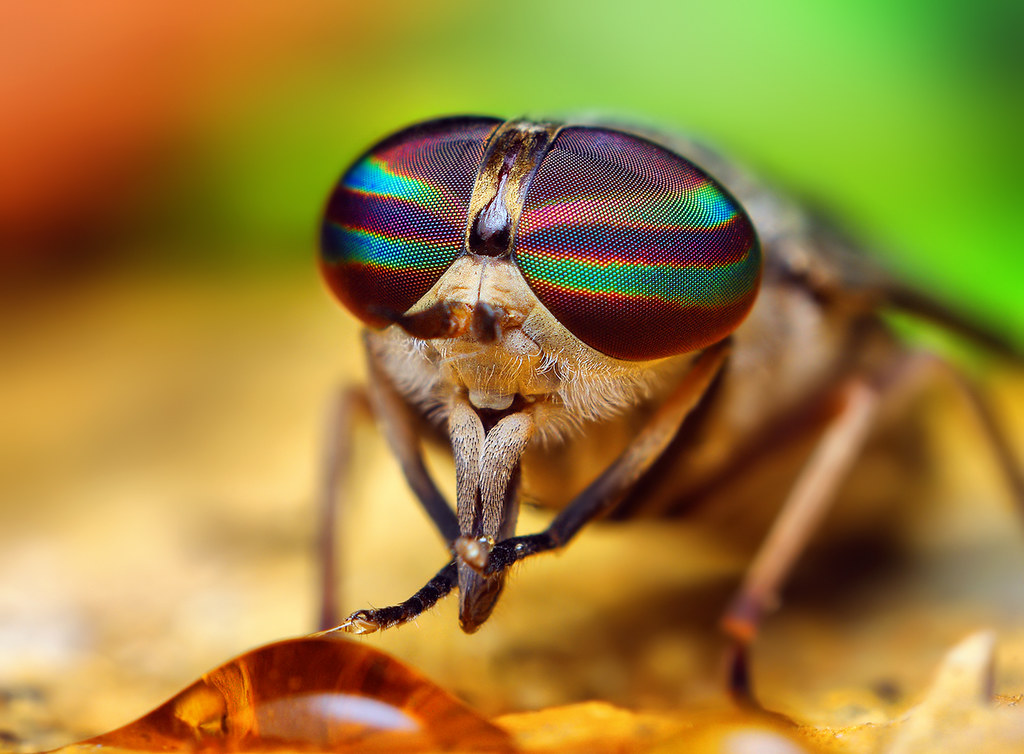
The absence of red perception in many insects isn’t a random quirk but an evolutionary adaptation tied to their ecological needs. Most insects have evolved with dichromatic vision, possessing only two types of photoreceptors typically sensitive to ultraviolet and green light, lacking the red-sensitive receptors that humans possess. This adaptation makes perfect sense when considering that many insects primarily interact with flowers, foliage, and the sky—environments where ultraviolet and green wavelengths carry more biologically relevant information than red wavelengths do. The energy required to develop and maintain additional photoreceptors would be metabolically expensive without offering sufficient survival advantages for most insect species. Additionally, the smaller size of insect eyes creates physical constraints on the number of different photoreceptor types that can be accommodated, forcing evolutionary trade-offs that have generally favored sensitivity to shorter wavelengths at the expense of red light perception.
The Evolutionary Advantages of UV Vision
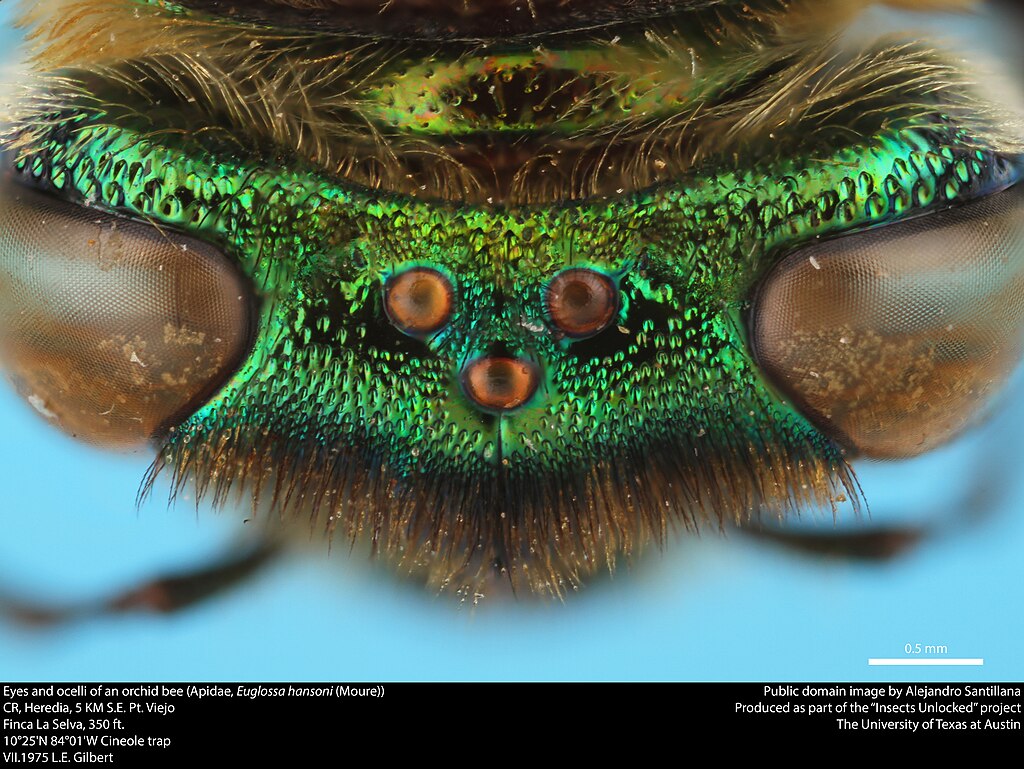
Ultraviolet vision provides insects with significant evolutionary advantages that have made it worth developing despite the trade-off of losing red perception. Many flowers have evolved UV patterns called “nectar guides” that are invisible to humans but appear as vivid signposts to pollinating insects, efficiently directing them to nectar and pollen sources. These patterns effectively create “landing strips” that can dramatically increase pollination efficiency, benefiting both the insects and the plants they service. UV vision also helps insects navigate using the polarization patterns of light in the sky, allowing for remarkable navigation abilities even on cloudy days when the sun isn’t directly visible. Additionally, some predatory insects use UV reflections to detect the wing membranes or body surfaces of their prey, giving them hunting advantages that red-sensitive vision simply wouldn’t provide. These compelling benefits explain why many insects have evolved visual systems that prioritize UV detection over red perception.
Bees: The UV Vision Specialists
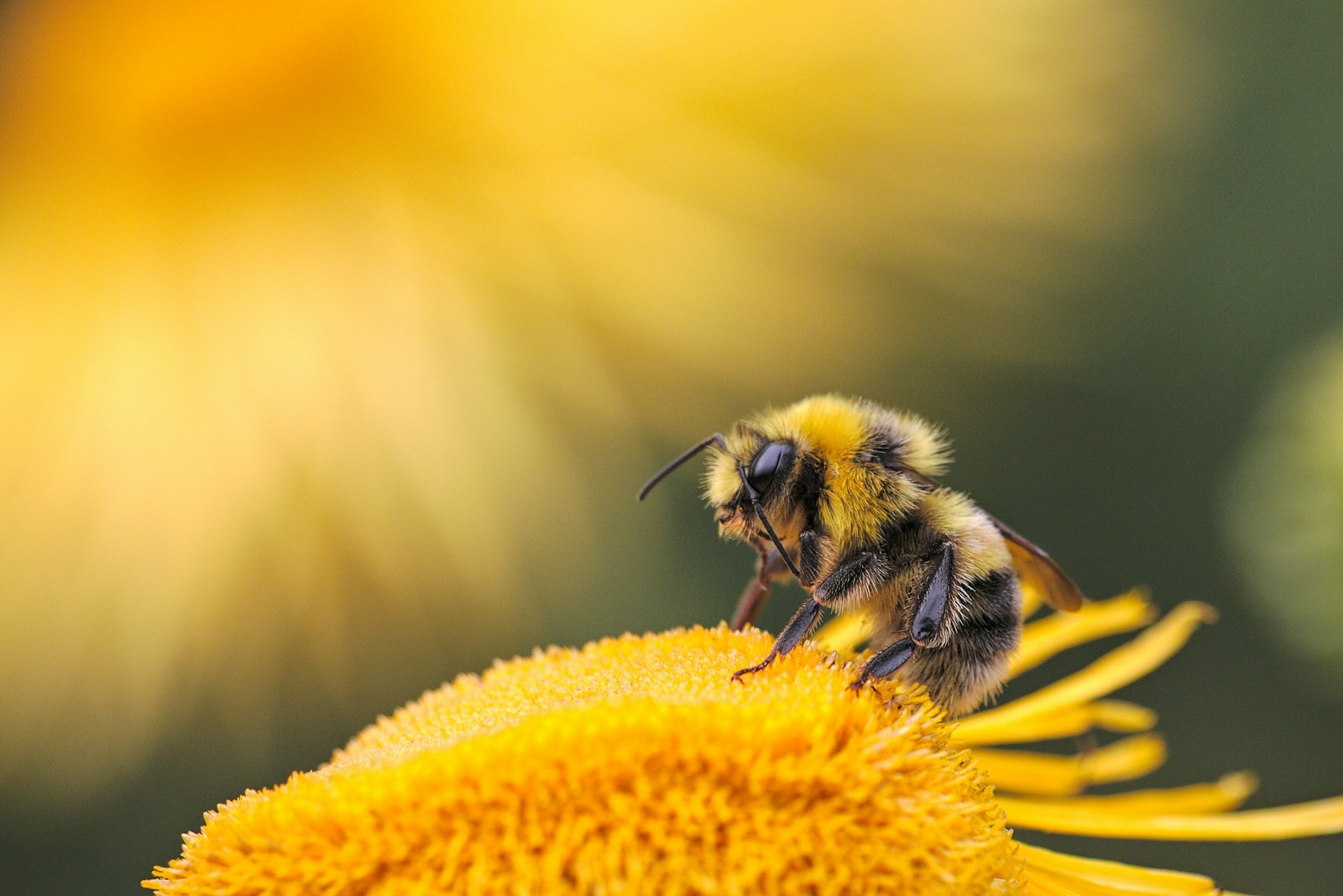
Honeybees represent perhaps the most well-studied example of insect UV vision, possessing trichromatic vision with photoreceptors sensitive to ultraviolet, blue, and green light. This specialized visual system allows bees to detect intricate UV patterns on flowers that serve as “nectar guides,” directing them precisely to sources of nectar and pollen that would be invisible to human eyes. What appears to us as a uniformly yellow sunflower might actually display dramatic bull’s-eye patterns when viewed through a bee’s UV-sensitive visual system. Research has demonstrated that bees can use these UV patterns to discriminate between flower species and even assess the quality of a flower before landing, significantly improving their foraging efficiency. Fascinatingly, bees also use UV perception for social communication, as their bodies reflect UV light in patterns that may help individuals recognize nestmates and distinguish between workers, drones, and queens within the complex social structure of the hive.
Butterflies: Champions of Color Diversity
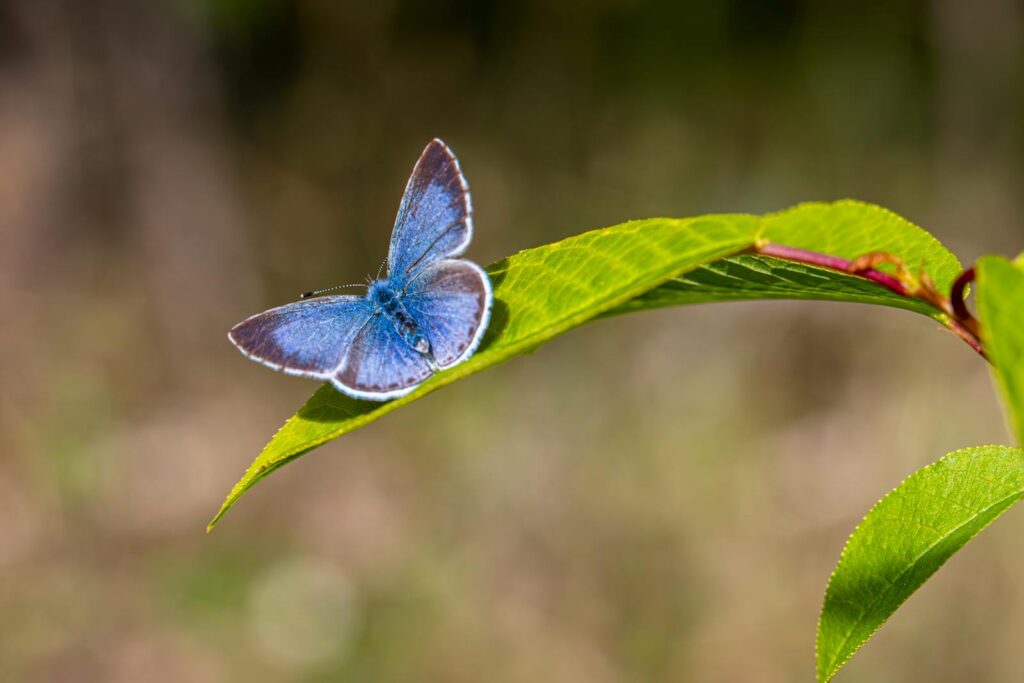
Butterflies stand apart in the insect world for their exceptional color vision, with some species possessing up to five different photoreceptor types—significantly exceeding human capabilities. This remarkable visual system allows butterflies to perceive an extraordinarily rich color palette, including ultraviolet wavelengths while also extending into the red end of the spectrum that many other insects cannot detect. Their advanced color perception serves multiple purposes, including finding specific host plants for egg-laying, identifying potential mates, and locating nectar-rich flowers for feeding. The elaborate wing patterns of butterflies often contain ultraviolet components invisible to humans but brilliant to other butterflies, functioning as complex signals for species recognition and mate selection. Some butterfly species like the Japanese yellow swallowtail (Papilio xuthus) have even developed specialized photoreceptors in different regions of their eyes, allowing them to process color information with remarkable sophistication for an insect.
Mosquitoes: Hunting by Heat, Not Color
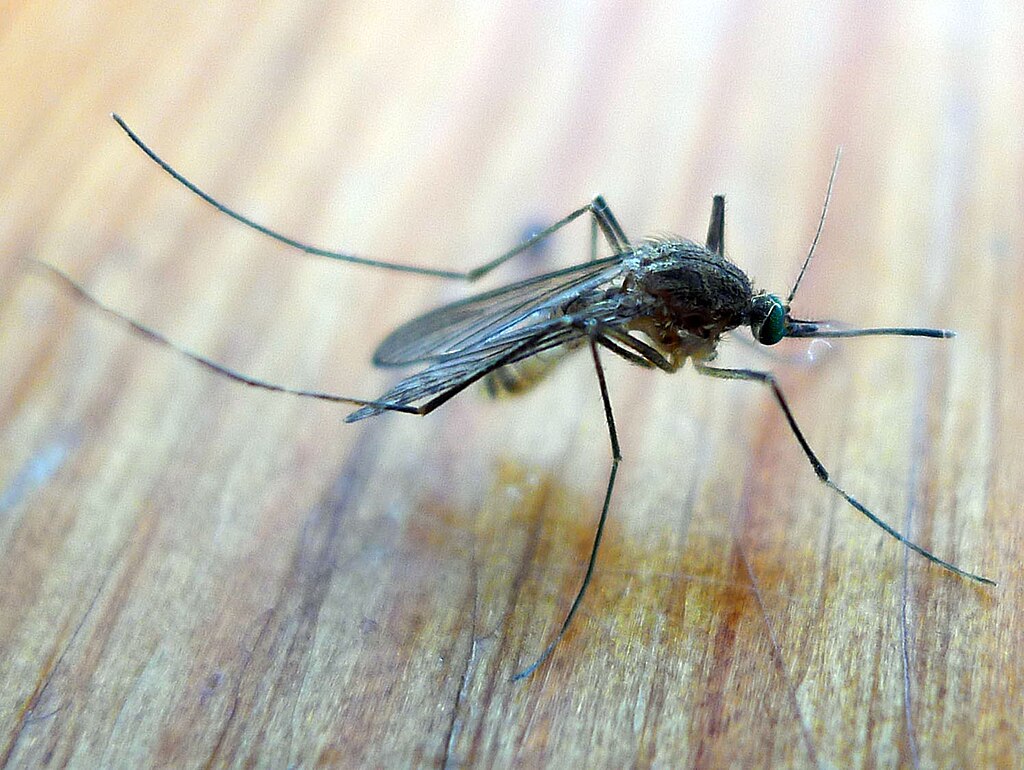
Mosquitoes represent an interesting case of insects that have evolved visual systems specifically adapted to their bloodsucking lifestyle, largely foregoing color vision in favor of other sensory capabilities. Rather than relying primarily on color vision, mosquitoes locate their prey through a combination of carbon dioxide detection, body odor recognition, and thermal sensing that allows them to detect the heat signatures of warm-blooded animals. Their vision is primarily attuned to detecting movement and contrasting shapes rather than distinguishing colors, with particular sensitivity to ultraviolet and blue-green wavelengths that help them identify potential hosts against background environments. Research has shown that dark colors tend to attract mosquitoes more than light ones, not because they “see” the colors as we do, but because darker objects absorb more heat and provide stronger contrast signals to their motion-sensitive visual system. This specialized sensory adaptation explains why mosquitoes can find us so efficiently in the dark—they’re not seeing red or any color at all, but rather homing in on our heat signatures and the carbon dioxide we exhale.
Dragonflies: Predators with Near-Perfect Vision
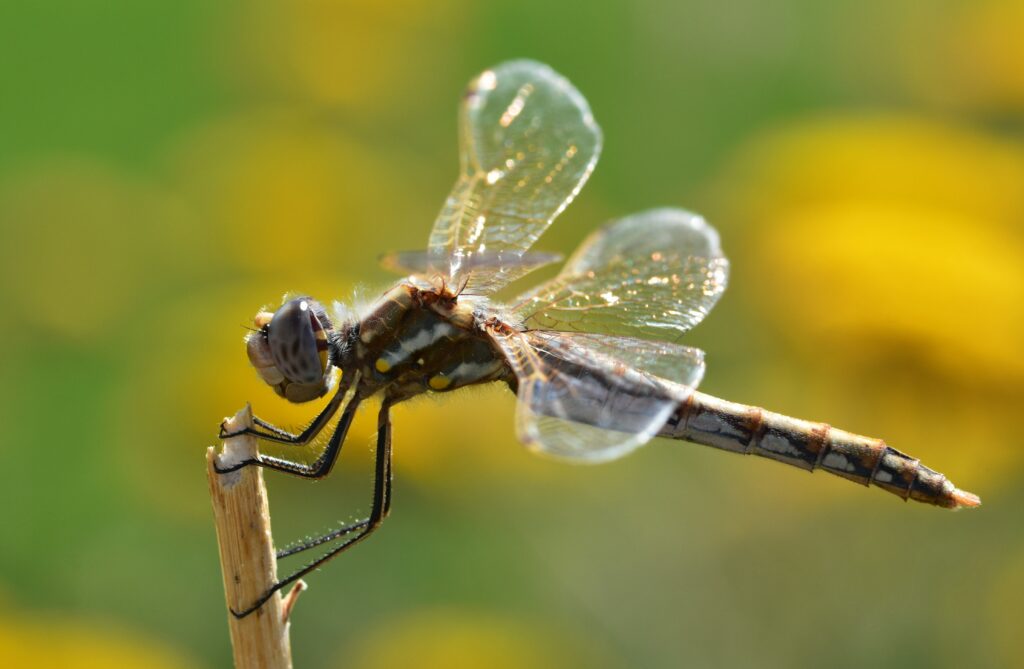
Dragonflies possess some of the most sophisticated eyes in the insect world, with up to 30,000 ommatidia in each compound eye that covers nearly the entire head and provides a near-360-degree field of vision. Their visual system includes up to five different color photoreceptors, allowing them to perceive a spectral range from ultraviolet to red—a rare capability among insects. This exceptional vision serves their predatory lifestyle, as dragonflies can detect the movement of potential prey from up to 40 feet away and calculate interception paths with remarkable precision. Research indicates that dragonflies can process visual information so rapidly that they experience time at a slower rate than humans, allowing them to track fast-moving prey with extraordinary accuracy. Their color vision may help them distinguish potential prey items against varying background environments, though they rely more heavily on motion detection for hunting than on color discrimination.
Ants: Vision Adapted to Life on the Ground
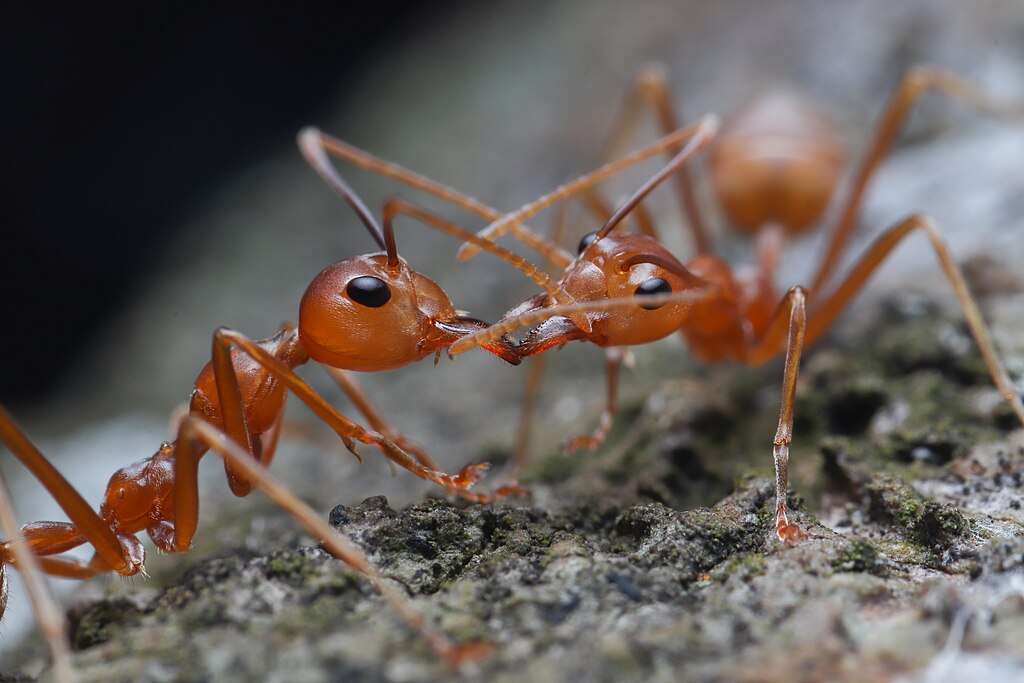
Ant vision varies dramatically across species, reflecting their diverse ecological roles from subterranean dwellers with minimal visual needs to canopy-dwelling species with more developed visual systems. Most ant species have dichromatic vision sensitive to ultraviolet and green wavelengths but completely blind to red light, which explains why red lights are often used by researchers observing ant behavior without disturbing them. Vision plays a secondary role to chemical communication for most ants, with their eyesight primarily serving navigation needs rather than food detection or social interaction. Desert-dwelling ants like Cataglyphis species have evolved particularly sophisticated visual navigation systems that allow them to use polarized light patterns and landmarks to find their way back to the nest after foraging journeys. The relatively simple visual systems of many ant species demonstrate how sensory capabilities evolve to match ecological demands, with these social insects investing more heavily in chemical communication than in elaborate color vision.
Mantis Shrimp: The Extreme Case
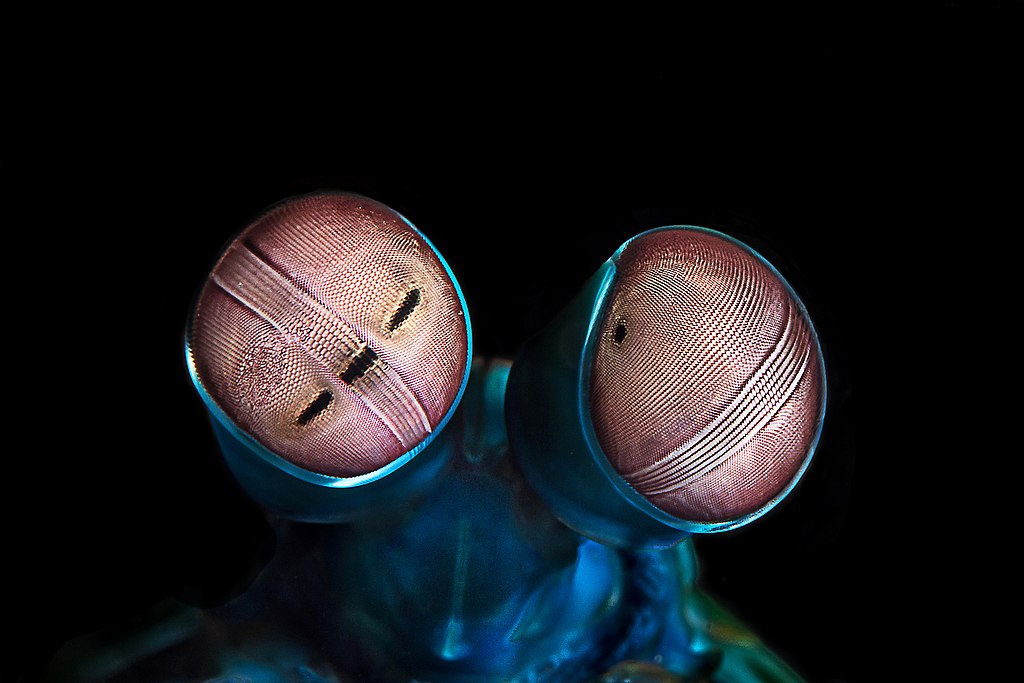
Although not insects but crustaceans, mantis shrimp deserve mention for possessing perhaps the most extraordinary color vision system in the animal kingdom, with up to 16 different types of photoreceptors compared to our mere three. This remarkable visual system allows them to perceive ultraviolet, visible, and polarized light with unparalleled precision, including the ability to detect circular polarized light—a visual capability found in few other animals. Mantis shrimp can process color information directly at the receptor level rather than in the brain, allowing for incredibly fast visual processing that aids in hunting and communication. Scientists initially puzzled over why mantis shrimp would need such an elaborate visual system, but research suggests it allows for instantaneous color recognition without complex neural processing, trading off discriminatory ability for speed—essentially a different evolutionary approach to color vision. Their extreme case highlights the diverse evolutionary paths that visual systems can take when adapting to specific ecological niches and lifestyle requirements.
How Scientists Study Insect Vision
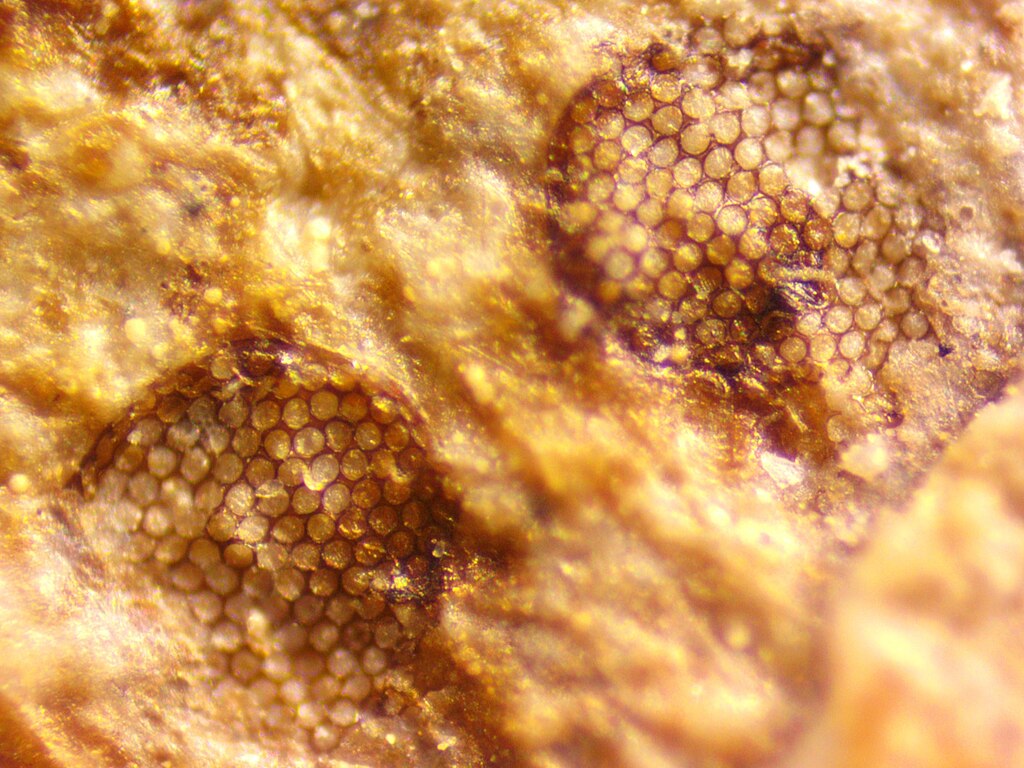
Researchers employ several sophisticated techniques to understand how insects perceive the world through their unique visual systems. Electroretinography allows scientists to measure electrical responses in insect eyes when exposed to different wavelengths of light, revealing which parts of the spectrum trigger neural activity. Behavioral experiments track how insects respond to various colors and patterns, such as testing which colored targets bees will preferentially visit when trained with rewards. Molecular genetics has enabled researchers to identify and characterize the specific opsin genes that encode light-sensitive proteins in insect photoreceptors, providing insights into the evolution of their visual capabilities. Advanced imaging techniques, including specialized cameras that can capture ultraviolet patterns, help scientists visualize the world as insects might see it, revealing hidden patterns on flowers and other objects that remain invisible to the human eye but play crucial roles in insect ecology.
Implications for Agriculture and Pest Control
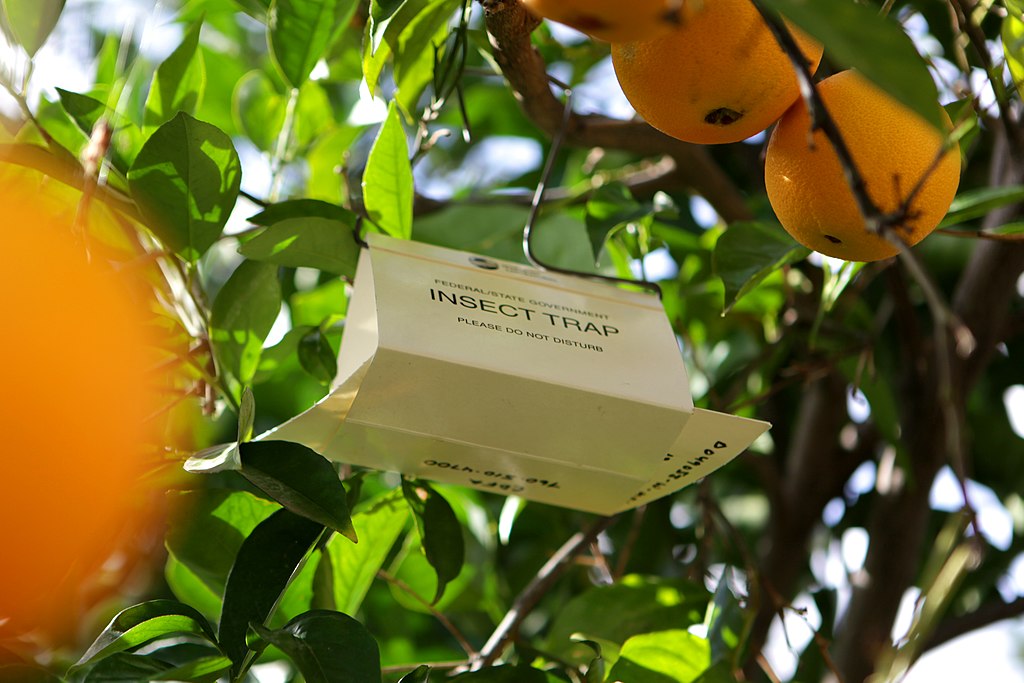
Understanding insect vision has significant practical applications in agriculture and pest management strategies worldwide. Farmers and researchers develop colored traps that specifically target pest species based on their visual preferences, such as yellow sticky traps that attract whiteflies and aphids or blue traps that capture thrips more effectively than other colors. Greenhouse designers utilize knowledge of insect vision to develop specialized films and screens that block ultraviolet wavelengths, effectively making the greenhouse crops “invisible” to many pest species that rely on UV cues for host plant location. Light-based repellent systems exploit insects’ visual sensitivities, using wavelengths that specifically deter target pests while minimizing disruption to beneficial species like pollinators. The development of companion planting strategies often incorporates plants with visual properties that either mask crop plants from pest detection or actively repel insects through visual signals that trigger avoidance behaviors in specific pest species.
Future Research Directions

The field of insect vision research continues to evolve with several promising directions for future investigation. Advances in neuroimaging technologies may soon allow scientists to create more accurate models of how visual information is processed in insect brains, potentially revealing how relatively simple neural networks solve complex visual tasks. The relationship between climate change and insect visual ecology represents an emerging research area, as shifting flowering times and altered light conditions may disrupt the visual cues that many insects rely on for survival. Researchers are exploring biomimetic applications of insect vision principles, developing cameras and sensors inspired by compound eyes that offer advantages in fields ranging from robotics to medical imaging. Understanding how insect vision develops during metamorphosis—how a caterpillar’s simple eyespots transform into a butterfly’s sophisticated compound eyes—may provide insights into neuroplasticity and sensory development with broader implications for biology and neuroscience.
Conclusion
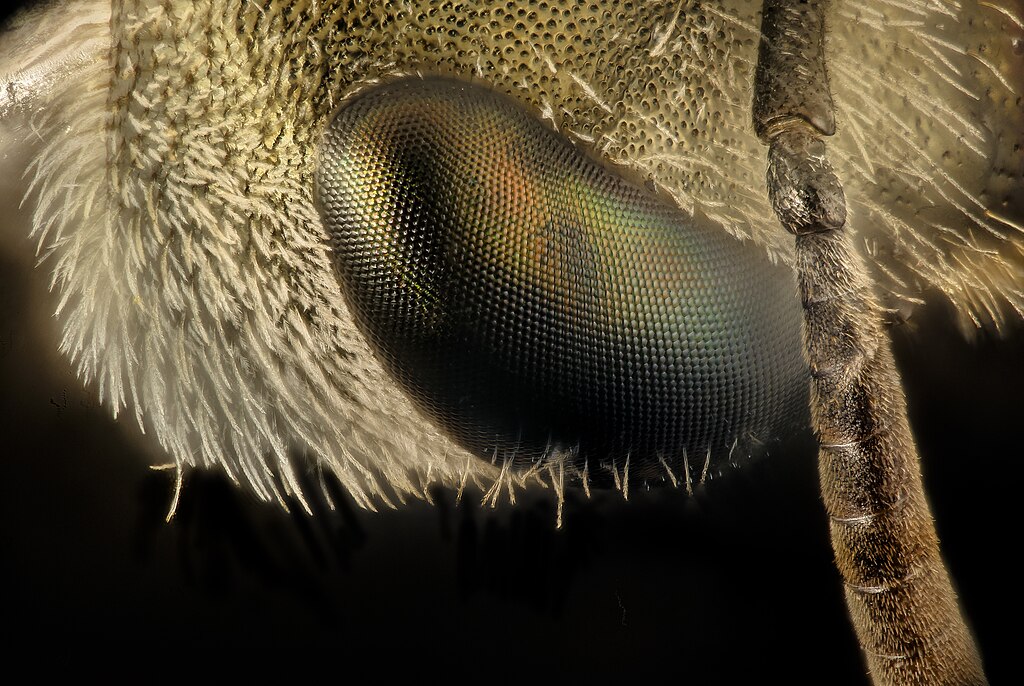
The visual world of insects reveals nature’s remarkable ability to evolve specialized sensory systems perfectly adapted to specific ecological niches. The inability of many insects to see red light, coupled with their often extraordinary capacity to perceive ultraviolet wavelengths, isn’t a limitation but rather a specialized adaptation that provides significant advantages in their environments. This remarkable sensory divergence from human perception reminds us that there is no single “correct” way to see the world—different visual systems simply capture different aspects of reality based on what matters most for survival and reproduction. As we continue to explore and understand the diverse ways that insects perceive their world, we gain not only scientific knowledge but also a deeper appreciation for the extraordinary diversity of life and the countless different ways of experiencing our shared planet.

